HOW TO BUILD A HEDGEHOG HOUSE
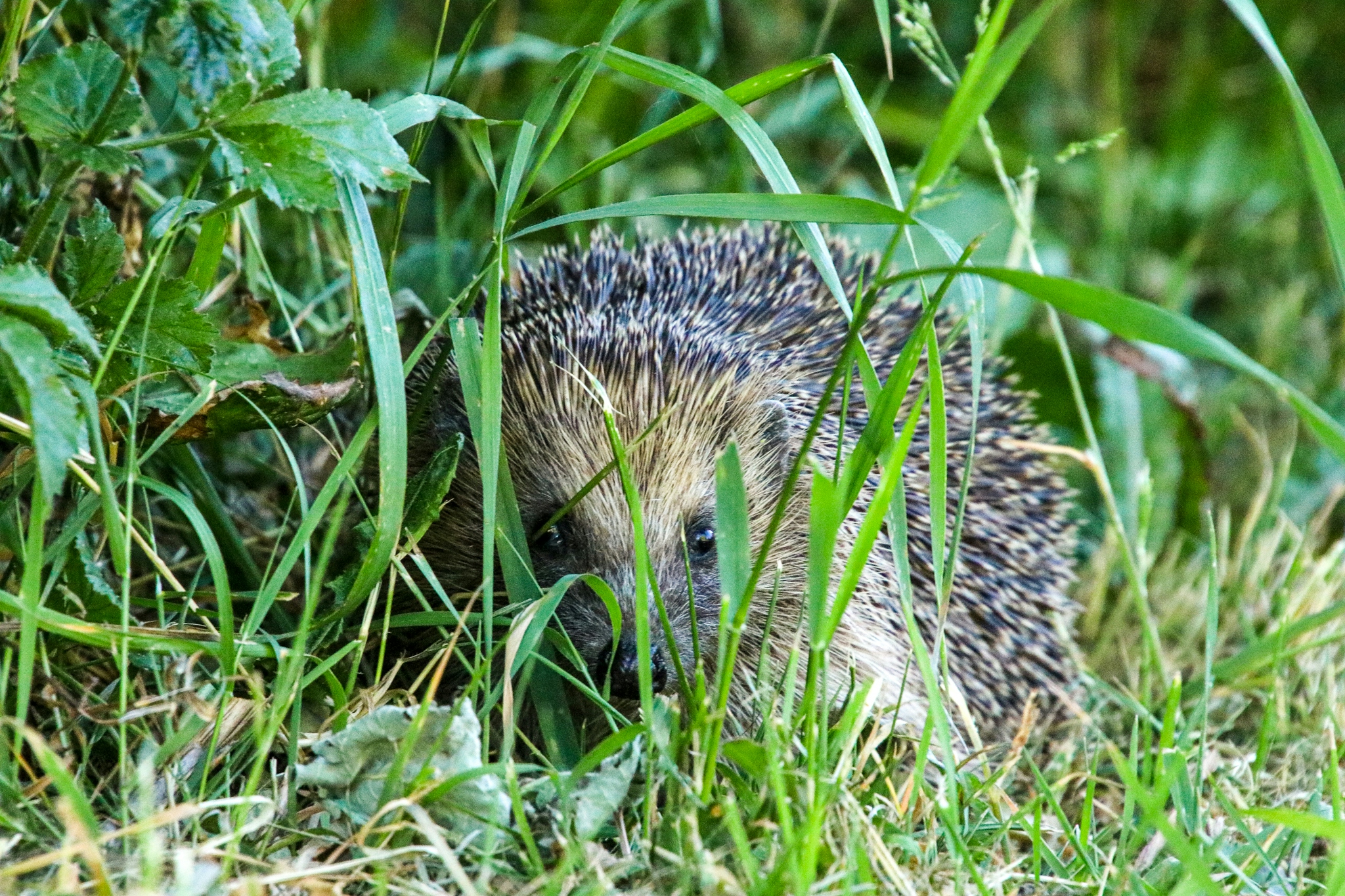
Hedgehogs are expected to go extinct in the UK by 2025 if their current rate of decline continues, so anything you can do to provide them with habitat, food and water, and places to nest and rest is worthwhile!
Putting a hedgie home in your outdoor space is a perfect way to help these adorable little mammals, and you might even be able to watch them using it, which is magical.
THE EASY OPTION
If you’re not handy with tools, the easiest way to provide a hedgie home is to buy one. There are lots available online and at garden centres, but here’s some tips to get the best for your hogs:
The house should have a corridor entryway to protect the hedgehogs from predators – sometimes this sticks out the front of the house, sometimes it’s by way of a subdivision within the box. If you’re using the house as a feeding station, this also stops all the neighbourhood cats eating your hedgehog food!
The product description should confirm that the wood used in the house is untreated or treated only externally with water-based preservative.
Stay away from wicker houses – they’re sold in garden centres but most conservation charities have recalled them due to concerns that they are not stable and reports that hedgehogs have gotten their spines stuck in the wicker.
It’s good to order from a provider that uses FSC wood so that you know it’s sustainably sourced.
Boxes that have a lift-up lid are best if you’re going to be using the house as a feeding station.
I bought my hedgehog house from the RSPB for around £50 and use it as a feeding station. It has a lift-up lid secured with a screw which makes it easy to change the food and water. This is quite pricey – there are cheaper ones around, just make sure they meet the criteria above. Or build your own!
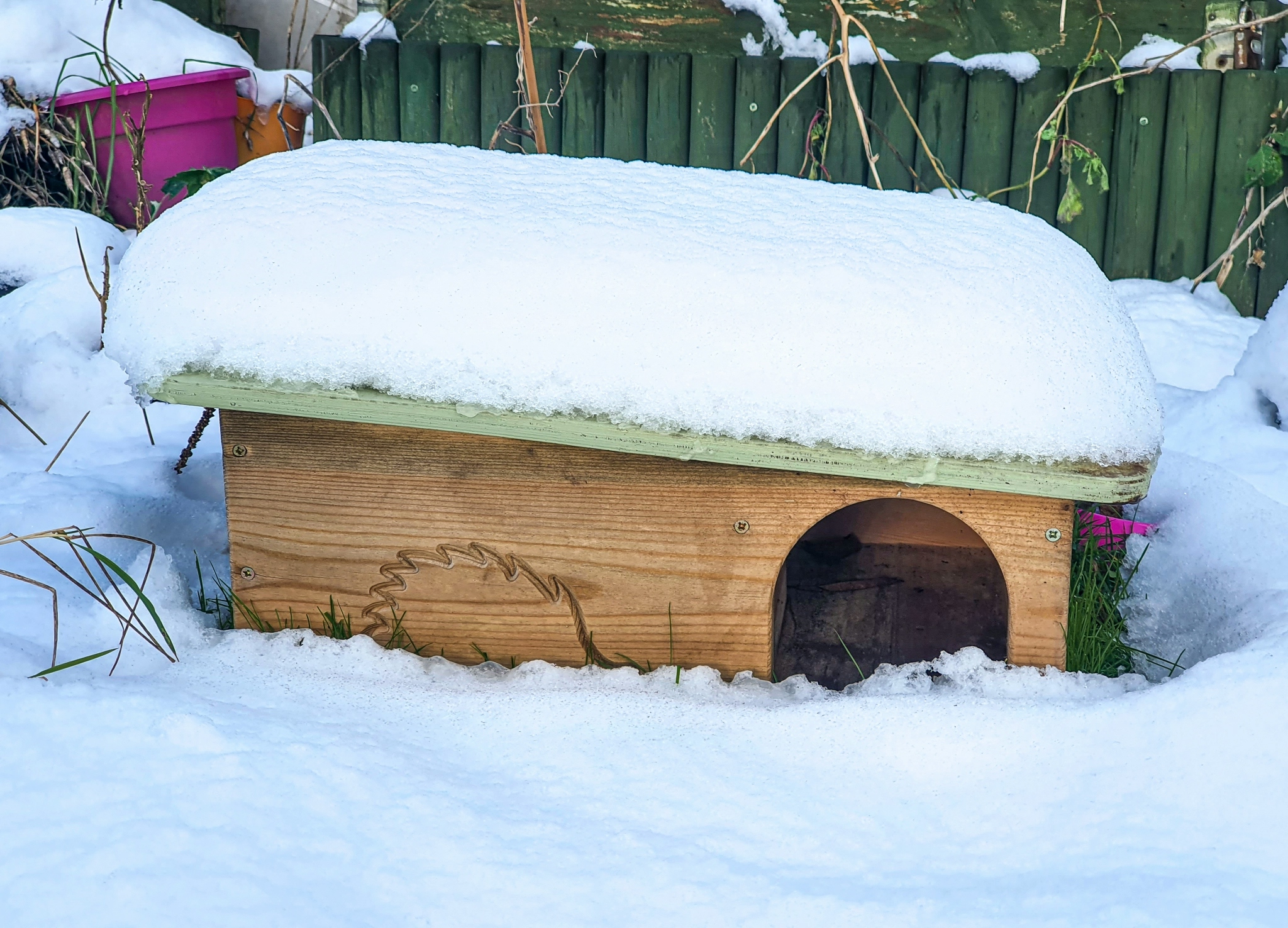
THE FUN OPTION
If you’re good at DIY, want to get the kids involved, are on a tight budget, or just enjoy creating things, you can make your own hedgehog house or feeding station, sometimes using materials you already have around the house or garden!
Generally, there are three main options when it comes to your materials: plastic, wood, or stone.
PLASTIC
This is a great low-cost option if you’ve got a large plastic storage box hanging around that you don’t use anymore. If you have a clear storage box it makes a great feeding station because you can watch them feed!
The principles are the same as when you buy a hedgehog house: you need to create an entrance hole, a corridor to protect them from predators (which can be internal or external), and it needs to be secure. There are no set rules about exactly how you achieve these criteria: hedgehogs aren’t very fussy! Here are some tips:
When you cut the entrance hole, be careful not to leave any sharp or serrated edges – use a file to smooth them off.
If you’re making a nesting box, you might want to put turf, earth, stones or a wood pile on top of and around the box to keep it secure and make it look more natural. If you’re covering it with earth you could sow some wildflower seeds to make it even prettier!
If you’re using the box as a feeding station you’ll need to be able to lift it up to put the food in, so secure it by resting a brick on top of the box.
Get creative with how you create your predator protection. You could build a tunnel on the outside of the box using bricks, stones, or a piece of pipe, or you could create one internally.
Your entrance way needs to be 13 cm by 13 cm.
WOOD
Again, the basic approach is the same as for purchased or plastic houses, but in particular:
Do not use pre-treated wood. The chemicals can be harmful to wildlife.
Don’t apply preservative to the wood for the same reason. If you really feel like you have to, apply it only to the outside and be sure to use a water-based preservative.
Try to source FSC wood wherever possible.
For measurements, follow some of the plans in the resources section of this post. They key thing is that your entrance hole is at least 13 cm by 13 cm.
Make sure that you don’t leave the end of any screws or nails sticking out on the inside of the box as it could injure your visitors.
Here's the inside of my well-used hedgehog house showing the predator protection corridor:
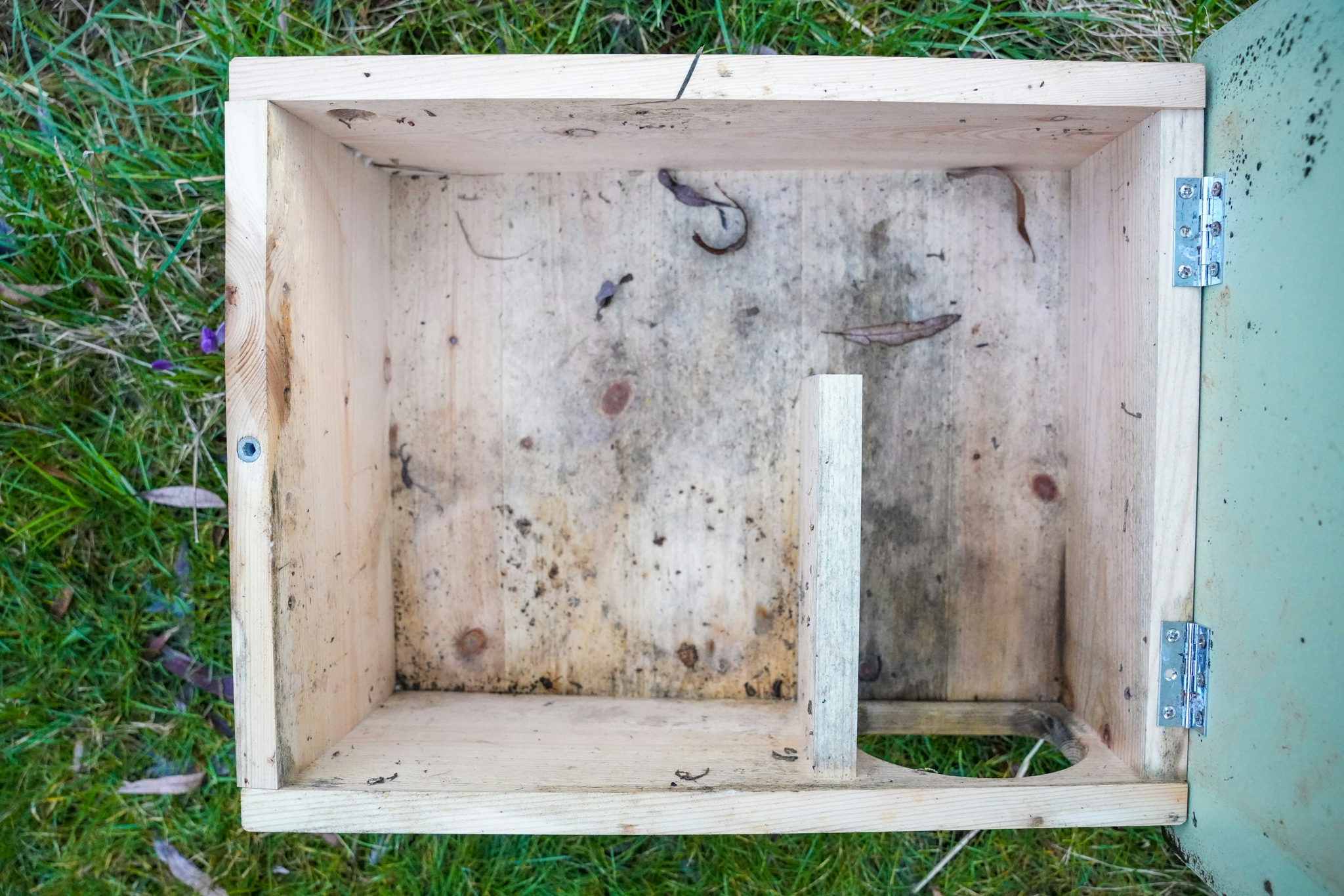
STONE
Stone is less insulating than wood or plastic, and is cumbersome to use as a feeding station if there’s a heavy lid, but hedgehogs can still make a cosy home in the same way they would in the wild, by bringing in dried leaves and other bedding. You can make the structure with bricks, stones or slabs – just arrange them into walls and the entrance corridor and then add a roof (of stone or any other waterproof material). Make sure the stones or bricks you’re using are secure and that the roof isn’t going to fall on your visitors. Depending on where you’re putting your house and what type of stone or brick you’re using, you might need to set it part way into the ground to give the walls stability.
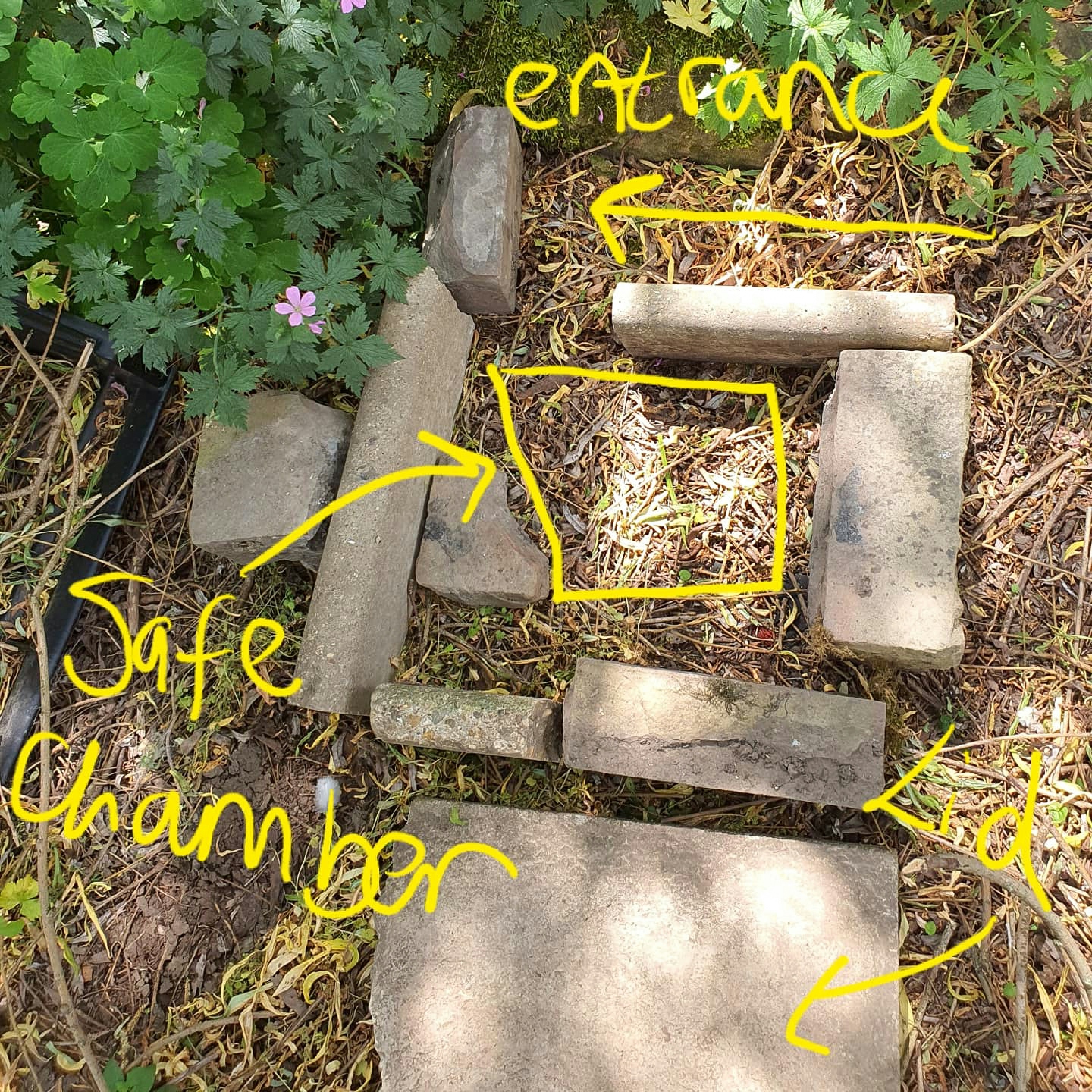
AFTER YOU’VE SET IT UP
The first thing to do after you’ve installed a hedgehog home in your outdoor space is to sit back and bask in the glow of having done something important and worthwhile for the benefit of a threatened and much-loved species.
Once you’ve congratulated yourself, you can decide how you want to use your house or houses. You can feed hedgehogs with hedgehog food (or cat or dog food) and water. Make sure you use shallow, heavy dishes as hedgehogs are small and are good at tipping up food bowls! If you’re providing the house as a nest box, it’s good to put it somewhere more sheltered, like under a hedge or tree.
The best bit about providing a nest box (other than the satisfaction) is watching it being used by wildlife. If you have access to a night vision trail camera, set it up to record when it detects motion in front of your hedgehog house, or just sit out in your garden in the evenings in spring and summer and you might see your visitors first-hand!
Let me know how you get on and who you see!
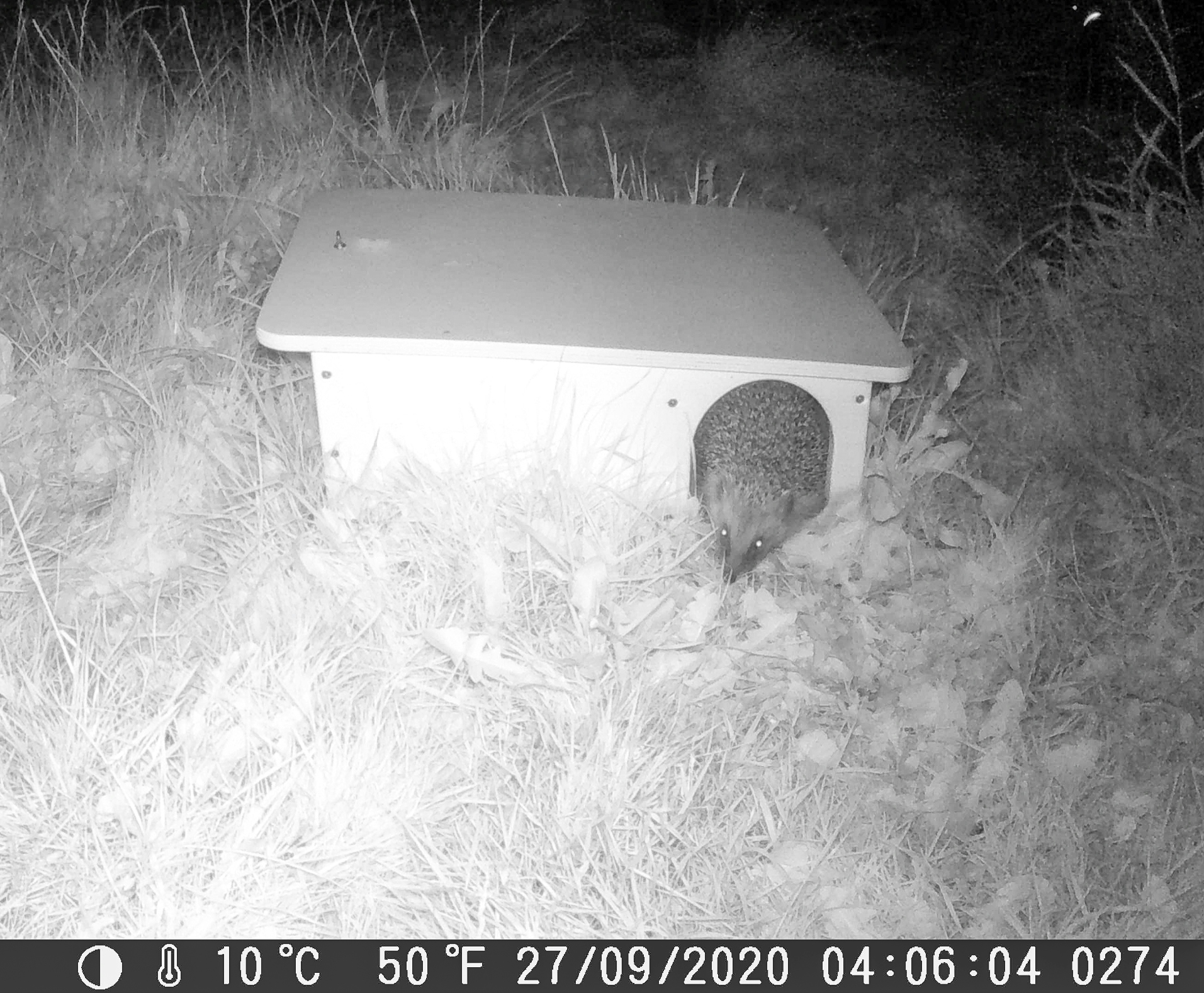
RESOURCES
RSPB plans for a DIY hedgehog house: https://www.rspb.org.uk/get-involved/activities/give-nature-a-home-in-your-garden/garden-activities/giveahogahome/
Buy an RSPB hedgehog home: https://shopping.rspb.org.uk/hedgehogs/?utm_source=main_website&utm_medium=gnah
Wildlife Trusts’ guide for a DIY hedgehog house: https://www.wildlifetrusts.org/actions/how-build-hedgehog-home
The British Hedgehog Preservation Society’s guide to hedgehog houses: https://www.britishhedgehogs.org.uk/hedgehog-homes/
Share with your friends
Subscribe to learn more
Join me in exploring our natural world and cultural heritage as we learn how to protect and restore it. Get notified on my latest posts and a monthly newsletter on wider conversation topics for us to chat about.
Recent Posts
If you enjoyed this one, then you might like these too.